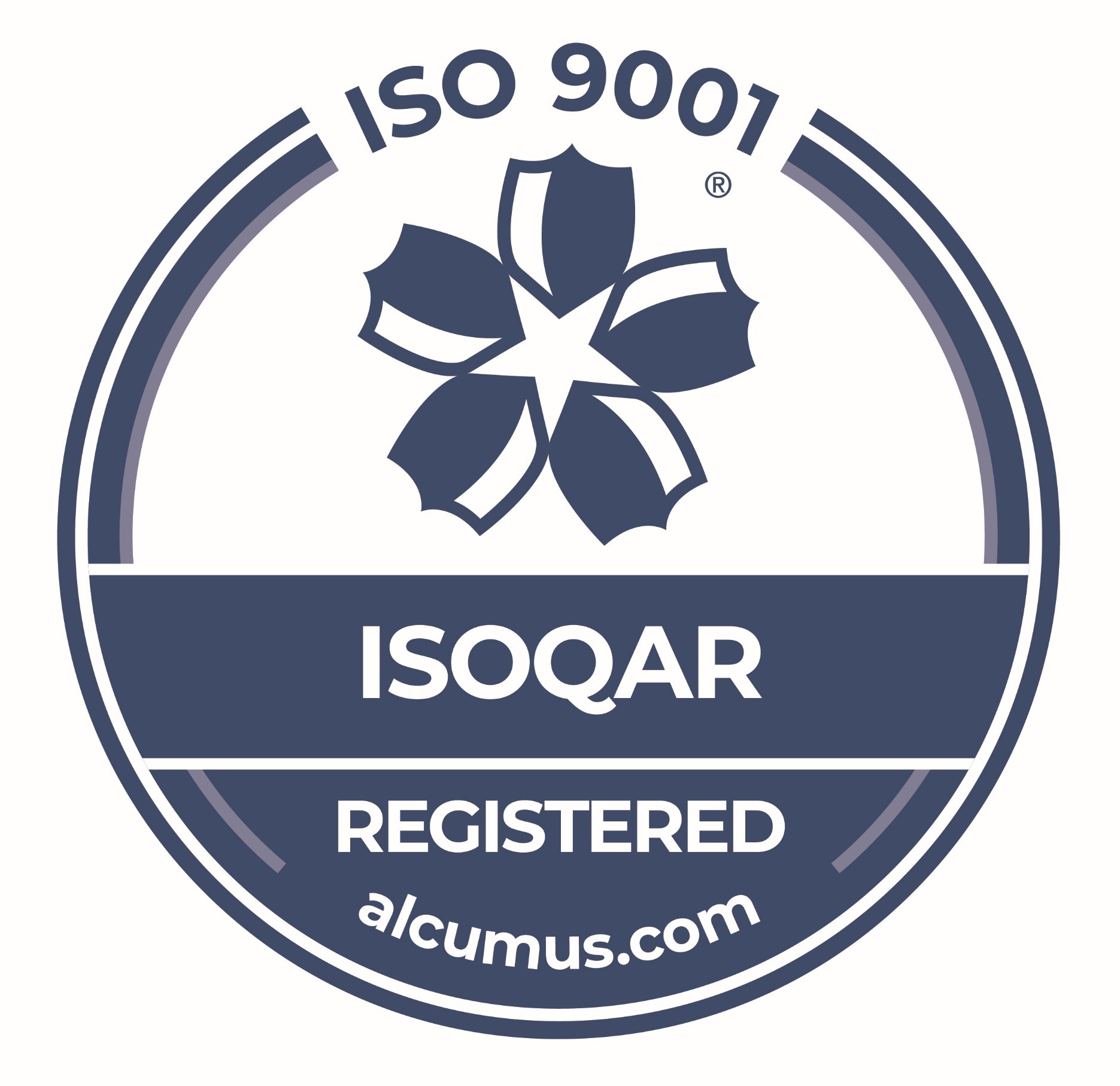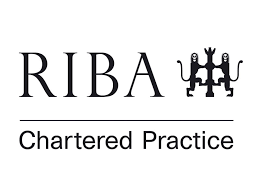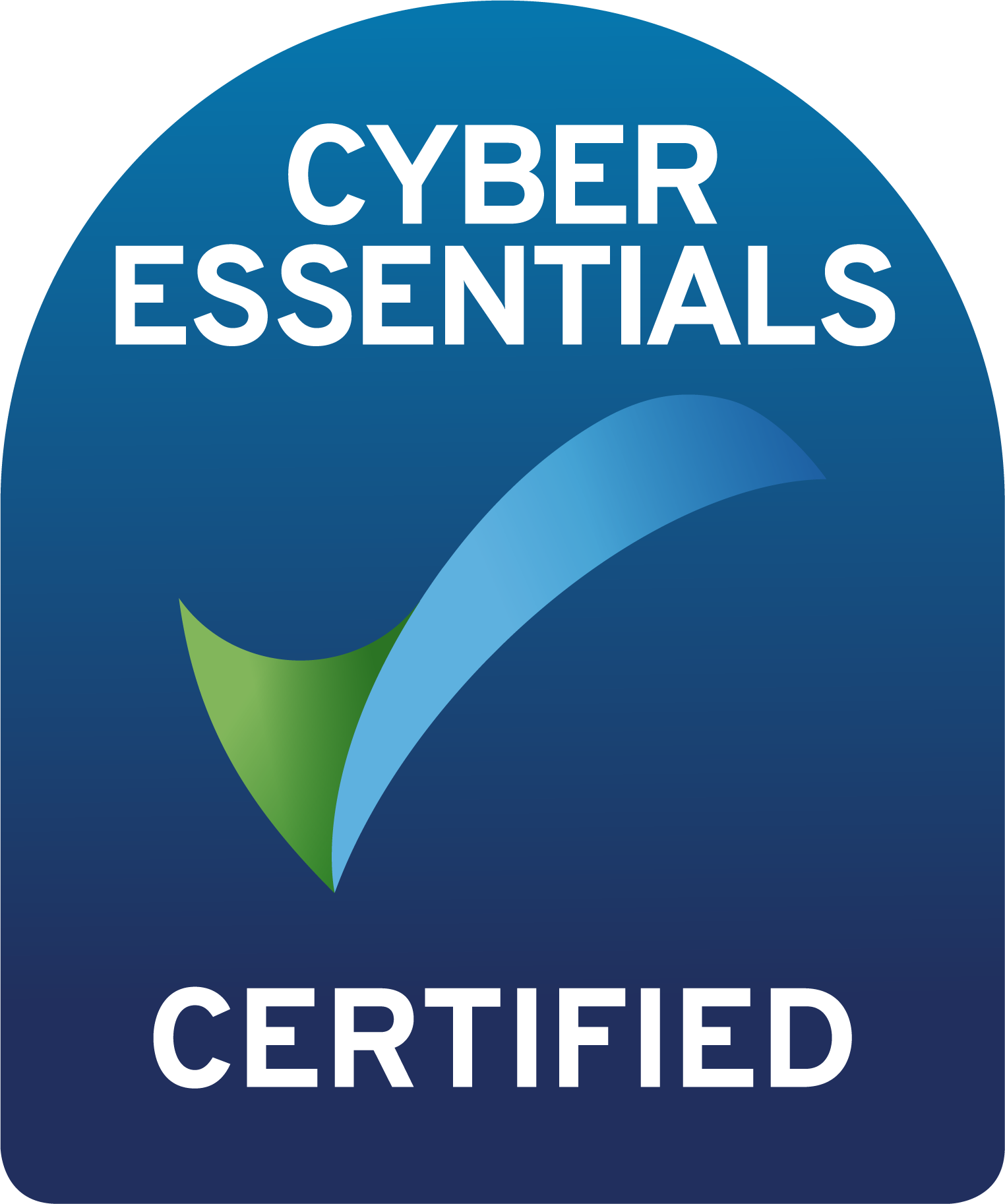Building Safety Act
Welcome to IKON’s blog, where we aim to share knowledge, insights, and experiences from our team. Before delving into the content, we want to make it clear that the information in this blog is not intended to be, nor should it be construed as, legal advice or binding guidance. We encourage you to use your discretion and judgment when interpreting and applying the information shared here. Thank you for joining us on this journey of exploration and discovery in this everchanging landscape in the world of architecture.
The answer is NO.
As an architectural practice that specialises in the design and delivery of projects within the healthcare sector, we are still asked this question from clients. Just recently, one of our clients received the wrong advice from the building control officer from their local council that hospitals are excluded from HRBs.
So we decided to start from the basics, and give clarity on this matter.
The part of the Act that causes the confusion, when read out of context, is:
Exclusions from the definition of “higher-risk building”
8.—(1) For the purposes of section 65 of the 2022 Act a “higher-risk building” does not include a building of a description specified in paragraph (2).
(2) The following descriptions of building are specified for the purposes of paragraph (1)—
(a) a building that comprises entirely of—
(i) a care home;
(ii) a hospital;
(iii) a secure residential institution;
(iv) a hotel;
(v) military barracks;
The key point here is that hospitals are excluded from the definition of Higher Risk Buildings (HRBs) for the purposes of section 65, which is in Part 4 of the Building Safety Act 2022 that introduces regulations to cover the safety of buildings when in-occupation. Hospitals, however, along with some other building types, are already regulated for their safety in-occupation as workplaces by the Regulatory Reform (Fire safety) Order 2005 (Order), and for that reason hospitals are excluded only from the Part 4 in-occupation part of the Act.
Subsequently, the rest of the Act and all the new legislative changes it imposes during the design and construction phases of a building apply to all hospitals, including the more onerous legislative changes in relation to those buildings identified as HRBs under the Act. Meaning that if a hospital is at least 18m in height or has at least 7 storeys, it falls under the definition of HRBs under the Act, and any works during the design and construction phases need to comply with the requirements of the Act.
Most likely, yes.
Although this is the second most common question we have been asked by clients especially since the Building Safety Act (BSA) came into force; it is also the same question that is not asked as often as it should! There seems to be a misconception along the lines of ‘we are only refurbishing the existing space’ or ‘we are not changing things that much’, which the BSA has brought to the forefront of discussions.
Let’s first clarify that the BSA has not brought any changes to the building regulations themselves, and which works they apply to. The BSA has brought procedural changes introducing clear accountability and transparency for the design and delivery of safe buildings compliant to the existing Building Regulations 2010 (the Regs).
The Regs can be challenging to read and decipher in areas, but it is necessary to determine from the outset if a scheme requires an application for building control approval. In relation to a refurb scheme in a hospital for example, most of the works would fall under the Regs. The reason for that in simple terms is because when you are extending a ‘controlled service or fitting’ which includes existing systems like hot / cold water supply, drainage, and electrical installations, these works fall under the definition of ‘building work’ in the Building Regulations 2010. Therefore, schemes that include such works require a building control application approval.
Extract from the definition of ‘Building Work’ Part 2 The Building Regulations 2010.
Meaning of building work
3.—(1) In these Regulations “building work” means—
(a) the erection or extension of a building;
(b) the provision or extension of a controlled service or fitting in or in connection with a building;
(c) the material alteration of a building, or a controlled service or fitting, as mentioned in paragraph (2);
(d) work required by regulation 6 (requirements relating to material change of use);
(e) the insertion of insulating material into the cavity wall of a building;
(f) work involving the underpinning of a building;
(g) work required by regulation 22 (requirements relating to a change of energy status);
(h) work required by regulation 23 (requirements relating to thermal elements);
(i) work required by regulation 28 (consequential improvements to energy performance).
Extract from the definitions Part 1 Regulation 2 The Building Regulations 2010.
“controlled service or fitting” means a service or fitting in relation to which Part G, H, J, L or P of Schedule 1 imposes a requirement;
Details on the Requirements can be found in Schedule 1 The Building Regulations 2010.
PART G SANITATION, HOT WATER SAFETY AND WATER EFFICIENCY
PART H DRAINAGE AND WASTE DISPOSAL
PART J COMBUSTION APPLIANCES AND FUEL STORAGE SYSTEMS
PART L CONSERVATION OF FUEL AND POWER
PART P ELECTRICAL SAFETY
For further clarity,
- Schedule 3 The Building Regulations 2010 details the works that can be carried out under a self-certification scheme and not requiring a building control notice or application.
- Schedule 4 The Building Regulations 2010 details the works not requiring a building control notice or application.
Another reason a refurb scheme would likely require a building control application, is if the proposed works result in changes to the Fire Strategy of the building, which could include alterations to the fire alarm, fire stopping, layout changes etc. A simple ‘change of use’ to an existing room from an office to a store in a hospital would result in the room ‘becoming’ a ‘fire hazard’ room as defined in the relevant legislation. Therefore, it is important for the scheme to be reviewed against the relevant fire standards to determine if the Fire Strategy requires to be altered and if the works fall under the Regs.
Since a significant amount of the work in the healthcare sector is refurbishment and reconfiguration schemes within the aging building stock of the NHS or private healthcare providers, it is likely most will require a building control application. If the building is determined to be a Higher-Risk Building (HRB) as defined in the BSA, then the application would need to be submitted to the new Building Safety Regulator body, whilst all other schemes can be submitted to a local council Building Control Authority or privately through an Approved Inspector, similar to the arrangements prior to the introduction of the BSA. We will be exploring these in more detail in future posts.
As the responsibility in the BSA is clear that the client, as a duty holder, ‘must make suitable arrangements for planning, managing, and monitoring a project so it complies with all relevant requirements on completion’, it is important for a client to seek the right advice to determine if a scheme includes works that fall under the Building Regulations and all relevant requirements in order to not fall short of the legislation.
If you are unsure, seek the advice of a professional from the Building Control department at your local council, from an Approved Inspector or from an architect. We would certainly be happy to assist if you want to contact us at [email protected].
Based on our experience having completed a Gateway 2 application and received approval for works to an existing hospital scheme categorised as a higher-risk building (HRB), we have listed below the information required in order to complete an application for Building Control approval for works to an HRB. The project is now on site and works are progressing well within the new legislative system, working closely with the BSR and having already had a major change control application and relevant site inspections.
In the first instance, you will need to start the application via the following link to the government portal. Being part of the .gov website, the interface is similar to that one may have used to obtain a driving licence or passport or any HMRC works, and not similar to a building control or planning portal one you may expect!
https://www.gov.uk/guidance/manage-a-building-control-application-for-a-higher-risk-building
At the start you need to fill in the following details to receive a unique reference from the BSR and help keep track of the application.
(!) Tip: the person who is filling out the information below is the only person who receives correspondence via their email address. There is no option to add further contact details at the moment, which we have highlighted to the BSR as part of our feedback as it can be tricky on larger schemes or when the specific person is on holiday.
- Name your application
- What are you applying to do?
- Your name
- Your telephone number
- What is your organisation type?
- What is the name of your organisation?
- Organisation address
- Organisation email address
- Verification
(!) Tip: This is the point where you will receive an email with the unique reference for your project. Keep this safe. You can use it to return to your application at any time using the same link as above.
(!) Tip: It is important to receive the unique reference before you continue to the next section of the application. The portal times out for security reasons after 15 minutes and without the unique reference to log back you will lose any information you fill in the following sections… unless things changed since our application!
Then there are 9 sections to complete with all the information and documentation required to upload.
(!) Tip: Remember to save as you go! Once you save you can leave and come back to the application using the unique reference code and start where you finished last time.
(!) Tip: Every time you log in you have to add the email address you originally had put in the contract details, a verification email with a 6-digit security code is sent to that email, and you input that to get back onto the application. Here is where access to the original email address is important!
1. Name and location of project
(a) Building name
(b) Building location
2. Current building details
(a) Does the higher risk building have a registration number?
(!) Tip: Existing hospitals do not have a registration number, this section is not applicable.
(b) How many storeys does the existing building currently have?
(c) What is the current height of the existing building?
(d) Current number of residential units
(e) Current number of non-residential units
(f) Current primary use of the existing building
(g) Current use of each storey
3. Proposed work
(a) What work are you proposing?
(!) Tip: There are two categories of this kind of work A and B. You need to select all descriptions that apply to the work you are proposing.
(b) Will the use of any part of the building change in any way?
(c) Describe the work you are proposing to undertake
(!) Tip: 2000 character limit and remember to save and continue within 15 mins as you don’t want to lose that amount of text!
(d) Estimated build time in months
(e) Do you have a planning reference number?
(f) Do you want to submit a partial completion strategy?
(g) Upload the partial completion strategy
4. Drains, sewers and local enactments
(a) Are you constructing a new drain or private sewer?
(b) Drainage precaution
(c) Do any local enactments apply and how you will comply with them
5. Documents
(a) Upload to show that work will fully comply with the building regulations
(b) Site location plan
(c) Competence declaration
(d) Construction control plan
(e) Change control plan
(f) Mandatory occurrence reporting plan
(g) Building regulations compliant statement
(h) Fire and emergency file
6. Client details
7. Principal Designer details
8. Principal Contractor details
9. Pay and submit
(a) Client authorisation to act for them
(b) Declaration
(c) Payment method (£180)
In terms of timescales, according to the The Building (Higher-Risk Buildings Procedures) (England) Regulations 2023 Section 13.—(1) (b) an application for works to an existing HRB would be determined within 8 weeks from submission of a valid application ‘or within such longer periods as at any time the regulator and the applicant agree in writing’. In our case, which is worth noting it was a small internal refurb scheme, it took 2 weeks from submission to validate the application, and 11 weeks from validation to receive the approval notice. Therefore, it is important to ensure all in the project team and relevant stakeholders are aware of the increased timescales that may affect the project deliverables.
Keep a look out for future posts where we will be expanding on the information above, focusing on the new documentation that is now required as part of this process such like the Change Control plan or the Mandatory Occurrence Reporting plan.
As one of the core documents to submit to the Building Safety Regulator (BSR) to obtain building control approval for an existing higher-risk building, a Construction Control Plan (CCP) must be produced by the dutyholders at the design stage for Gateway 2 approval which sets out the details for Construction Works and how these will be controlled on site to ensure compliance with the building regulations.
Before construction starts, there must be clear strategies in place to ensure compliance with all applicable building regulations and how this will be maintained during building work. The strategies within the CCP should focus on cooperation, coordination, communication and competence. This includes setting out how compliance will be evidenced. This will assist you to manage and maintain the change control log and provide the information on design and construction that will need to be stored in the Golden Thread of information. This will also assist in information preparation for a building completion certificate application at gateway 3.
The extract below from the The Building (Higher-Risk Buildings Procedures) (England) Regulations 2023 (legislation.gov.uk) of Schedule 1 (2) sets out the requirements for a Construction Control Plan:
A Construction Control Plan must set out—
(a) the strategies, policies and procedures the client has adopted for planning, managing and monitoring the HRB work, a stage of HRB work or work to existing HRB so as to ensure compliance with—
(i) the applicable requirements of the building regulations and to record evidence of that compliance including describing the arrangements the client has adopted to maintain the Golden Thread information;
(ii) the duties in Chapter 4 (duties of dutyholders) of Part 2A of the 2010 Regulations;(b) the strategies, policies and procedures the client has adopted to identify, assess and keep under review the competence of the persons carrying out the HRB work, a stage of HRB work or work to existing HRB or involved in the design of the higher-risk building or design of the building work to the higher-risk building, including the procedures to be followed—
(i) to determine whether a serious sanction (as defined in regulation 11E of the 2010 Regulations) has occurred in relation to a person to be appointed;
(ii) to consider any past behaviour in relation to any serious sanction which might call into question the suitability of a person to be appointed;
(iii) if a person in relation to which a serious sanction has occurred is appointed, to prevent a repeat of the behaviour;(c) the strategies, policies and procedures the client has adopted to support co-operation between designers, contractors and any other persons involved in the HRB work, a stage of HRB work or work to existing HRB, including the sharing of all necessary information;
(d) a schedule of each appointment which has been made as at the date of the application, giving the name of—
(i) the person who the client has appointed as the principal contractor (or sole contractor);
(ii) the person who the client has appointed as the principal designer (or sole or lead designer);
(iii) any other person (excluding individuals except where they are a sole trader) the client has appointed to work on the project;
(iv) any person (excluding individuals except where they are a sole trader) the principal contractor (or sole contractor) has appointed to work on the project, and
(v) any person (excluding individuals except where they are a sole trader) the principal designer (or sole or lead designer) has appointed to work on the project, and a summary of their responsibilities;(e) the policies the client has adopted to review the Construction Control Plan
The documents in the links below provide helpful published resources on the above:
- Managing building control approval applications for higher-risk buildings
- Building Control: An overview of the new regime
In summary, the Construction Control Plan must be a practical document setting out the details of the working arrangements for the Principal Contractor and all other Contractors to follow. It must describe how you are going to manage and monitor the works to ensure that when built, the building does satisfy all applicable functional requirements of building regulations. The responsibility for the production of the CCP lies with the client, however, the Principal Designer must also support in providing information.
Below is the list of information required to be included in the CCP, with a few tips from our experience of having had an application submitted for works on an HRB and approved after having helped our client with the information required for the production of a CCP.
The CCP must describe how the client’s strategies, policies and procedures will make sure:
- the building works will meet the building regulations
(!) Tip: During the design stages, a Building Regulations tracker schedule was produced to better manage and monitor the work plan to ensure that when built, the building satisfies all applicable functional requirements of building regulations. This was then transferred in to the CCP with specific drawing and specification references to help monitor the building work.
- that you check the plan is effective and how you will record evidence that the building works continue to meet the building regulations
(!) Tip: Hold points were included in the CCP, identifying when site inspections were required to monitor that the works continue to meet the regulations, and the evidence to be collected for inclusion in the Golden Thread.
- you capture ‘as built’ evidence to support the completion certificate application
(!) Tip: The elements of work requiring photographic evidence, third party certification, witness testing and commissioning, were identified along with the evidence required to be collected by the Principal Contractor for submission to the BSR as part of the ‘as built’ prior to final sign off.
- those carrying out the work are competent to perform their duties. What are the arrangements for ensuring the information, instruction and training provided to those carrying out building work is sufficient
(!) Tip: For each element of the relevant works in the project record the specific competencies/governing body memberships that are required for those undertaking the key tasks, ie NICEIC approved installers for the installation of emergency lighting.
- sanctions and past conduct of those carrying out the work is considered to decide if they are suitable for the role, or how to prevent a repeat of the behaviour
(!) Tip: Client to satisfy themselves they have appointed a suitable team, with a signed declaration required to be submitted to the BSR.
- designers, contractors and others working on the building co-operate and share information
- those carrying out the work have enough information and training
It must also give the name and a summary of the responsibilities of:
(!) Tip: Client to provide in the form of a signed competence declaration for the following roles, for submission to the BSR.
- the Principal Contractor
- the Principal Designer
- any other organisation or sole trader who will carry out the work
The Construction Control Plan must describe how and when you’ll review the plan.
(!) Tip: Apart from during the design stage, the CCP would be best managed and monitored as part of the site progress meetings with all dutyholders in attendance.
With the above in mind, the key take away is that although the creation of the CCP for a project is the responsibility of the client, it is a detailed and project specific document that requires a collaborative approach between the client and the project team, the Principal Designer and all the relevant designers in particular, for its completion for submission along with the Building Control Application to the Building Safety Regulator.
As part of a Gateway 2 application to obtain building control approval for an existing higher-risk building, a Change Control Plan must be produced by the Client. This needs to show what processes that will be adopted to ensure any controlled change, throughout a building project, will be dealt with in accordance with Regulation 18 (Change Control) and Regulation 19 (Change Control: Record-keeping) from The Building (Higher-Risk Buildings Procedures) (England) Regulations 2023.
The documentation produced at the design stage, sets out the details of how possible changes ‘recordable, notifiable and major’ will be controlled and recorded to ensure compliance with the building regulations and to maintain the Golden Thread of information.
(!) Tip: A change control application must be made by the client in writing and signed by the client prior to sending to BSR.
The extract below from the The Building (Higher-Risk Buildings Procedures) (England) Regulations 2023 (legislation.gov.uk) of Schedule 1 (3) sets out the requirements for a Change Control Plan:
Change Control Plan
3.—(1) A change control plan must set out the strategies, policies and procedures the client has adopted to ensure any controlled change takes place in accordance with regulation 18 (change control), and to log each controlled change in accordance with regulation 19 (change control: record-keeping) including explaining—
(a) how proposed changes will be identified and to whom they must be reported;
(b) how the impacts of proposed changes are identified and considered;
(c) in relation to proposed changes, the decision-making procedures adopted for agreeing a change including whose advice is to be sought;
(d) how changes are recorded and by when;
(e) the procedure to identify which changes require notification to the regulator and which changes require a change control application;
(f) how the effectiveness of the change control plan will be reviewed by dutyholders periodically.(2) In this paragraph “dutyholders” means the client, the principal contractor (or sole contractor) and the principal designer (or sole or lead designer).
The purpose of a Change Control Plan is to show:
- a clear change control process during construction to ensure there is an accurate record of changes;
(!) Tip: A controlled change is a change to:
• current or proposed plans of work
• how the work is carried out
• any stage of work, including adding or removing a stage
• any strategies, policies or procedures described in agreed documents
-
that the impact of changes are carefully considered and discussed with other parties as required;
(!) Tip: Consider how and at what level in your organisation the impact of controlled changes will be assessed and how these will be implemented and recorded.
- that the Regulator has oversight as necessary.
(!) Tip: The Change Control Plan should be project specific, use the language of the regulations around whether a change is recordable, notifiable or major and the impact of each category on the building project and how it will be addressed.
The Client must set out the strategies, policies and procedures in the Change Control Plan that should link to a Change Control Log that needs to include the information detailed below for submission to the BSR:
(!) Tip: The Change Control Log is created and maintained by the principal contractor (or sole contractor).
- the name of the individual recording the controlled change
- a description of the proposed change
- Explain how proposed changes will be identified and to whom they must be reported
(!) Tip: Use a change request form to record any changes required by the duty holders and design team or construction team, which will be added into the Change Control Plan and Log.
- To update the relevant drawings, specifications and include an assessment of which agreed document is affected by the proposed change and confirmation that a revised version has been produced.
- How the impacts of proposed changes will be identified and considered and how the higher-risk building work will, after the proposed change is carried out, meet all applicable building regulations.
- a list of the name and occupation of each person, if any, whose advice was sought in relation to the proposed change and a brief summary of any advice provided
- How changes will be recorded and by when
- The procedure to determine whether changes are recorded, notifiable, or major, and to identify which changes require notification to the Regulator and which changes require a change control application to the Regulator before the change can occur
(!) Tip: Regulation 26 of The Building (Higher-Risk Buildings Procedures) (England) Regulations 2023 provides a detailed explanation of what constitutes a major, notifiable and recordable change, which should be incorporated into the plan or otherwise detailed how those responsible for identifying, assessing and reporting such changes will comply with the detailed requirements.
The Client has a responsibility to ensure that the Change Control Plan is in place and the duty holders, the Client, the Principal Contractor (or sole contractor) and the Principal Designer (or sole or lead designer) have a responsibility to review the effectiveness of the Change Control Plan periodically over the project.
(!) Tip: From our recent involvement, an experienced client like an NHS Trust has existing change control procedures, including forms that can adapted to include the specific requirements under the legislation.
If you are thinking about starting or are in the process of completing a Gateway 2 application for works to an existing HRB, our advice would be to see what existing documentation is available from the Client or the collaborative team, duty holders and design team members to use as a basis for the change control suite of documentation. The functional requirements are not something new for building projects but making sure all changes form a record as part of the Golden Thread of information is the key objective. Remember: don’t reinvent the wheel, just realign it!!!
The documents in the links below provide helpful published resources on the above:
As part of a Gateway 2 application to obtain building control approval for an existing higher-risk building, a Mandatory Occurrence Reporting (MOR) plan must be submitted to demonstrate a project specific explanation as to how any mandatory occurrence will be identified, captured and reported in relation to these specific works.
Regulation 32 of The Building (Higher-Risk Buildings Procedures) (England) Regulations 2023 places duties on the principal dutyholders to establish an effective MOR system.
The Principal Contractor and Principal Designer are responsible for establishing, maintaining, and operating a reporting plan providing designers and subcontractors a system to raise safety concerns throughout the construction phase of a project.
(!) Tip: Principal Designers and Principal Contractors can operate the same system in a D&B scheme, or separate MOR systems.
The extract below from Regulation 32 sets out the requirements for a Mandatory occurrence reporting system.
(!) Tip: Although the main responsibility for the MOR is with the principal dutyholders, the Client as noted in Regulation 37 must take all reasonable steps to satisfy itself that the person appointed is able to fulfil the requirements.
Mandatory occurrence reporting system
32.—(1) The principal dutyholders(1) must—
(a)before the construction phase begins, establish a system which enables as far as is reasonably practicable the prompt reporting of every safety occurrence to the principal dutyholders by reporting persons, and
(b)maintain the system throughout the construction phase.
(2) The principal dutyholders must take reasonable steps to ensure each reporting person is provided with adequate instruction and information on the system established by virtue of paragraph (1) and the incidents or situations that should be reported by the reporting person through the system—
(a)in the case of a designer or contractor, before beginning any work;
(b)in the case of any other person, as soon as reasonably practicable after first entering the site of the work.
(3) The principal contractor (or sole contractor) must ensure an appropriate frequency of inspections of the work for safety occurrences throughout the construction phase.
(4) The principal designer (or sole or lead designer) must ensure an appropriate frequency of inspections of HRB design work for safety occurrences throughout the construction phase.
(5) The requirements of this regulation do not apply to work to existing HRB which consists only of—
(a)exempt work, or
(b)work to which regulation 10 (notification of emergency repairs to existing HRB) applies.
Mandatory occurrence reporting through the MOR system is required when there is a safety occurrence (structural safety or fire safety) in relation to the design of a building or an incident or situation during construction for which the building, if occupied without the risk being remedied, is likely to present a risk of a significant number of deaths or serious injury to a significant number of people.
(!) Tip: The MOR documents should clarify the reporting procedure to be undertaken by any reporting person on becoming aware of a safety occurrence.
(!) Tip: A Reporting Person is any person that accesses the site that includes any designer (including the PD), any contractor (including the PC) and any other person who is a periodic visitor on the site.
(!) Tip: Any person visiting site should be made aware of the reporting procedures under the MOR that could be through the site induction.
A Mandatory Occurrence Notice must be submitted as soon as you can when a safety occurrence is identified, and before a report is submitted.
Information that will be requested:
- the high-rise residential building registration reference or the building control application reference
- your contact details
- the date and time the safety occurrence was identified
- a brief description of the safety occurrence
- any immediate actions you’ve taken since to keep people safe
(!) Tip: When a mandatory occurrence notice is submitted, the BSR will provide a reference number to be used to submit a mandatory occurrence report.
A Mandatory Occurrence Notice can be submitted by following this link.
A Mandatory Occurrence Report must be submitted after submitting the notice and within 10 calendar days of identifying the safety occurrence.
Information that will be requested:
- the mandatory occurrence notice reference
- who submitted the notice – if someone else submitted the notice, the BSR will need your contact details
- the type of safety occurrence you are reporting
- what happened or has the potential of happening
- what caused the safety occurrence and how it was discovered
- who is involved and the effect or potential effect on them
- what you have done and plan to do to keep people safe
- anything you think should be shared for others to learn from
- any supporting information, such as documents, videos, or photos
(!) Tip: If a mandatory occurrence report is submitted, it may also be necessary to make a change control application, refer to our BLOG for more details on change control applications.
A Mandatory Occurrence Notice can be submitted by following this link.
The BSR through the MOR process want to capture any risks that could have a potential impact on fire and structural safety, and assess the relevance to other buildings, improve knowledge, promote safety-conscious culture change and improve fire and structural safety standards and best practice across the industry. The regulator will be looking for an effective MOR system, therefore if you are progressing with a Gateway 2 application for works to an Existing HRB make sure one is developed during the design stages.
(!) Tip: In a D&B scheme the Principal Contractor will have reporting documentation from a Health and Safety and CDM perspective that could be altered to incorporate the requirements of the MOR system during the construction phase. No need to reinvent the wheel!
Look out for blogs on further BSA and BSR related matters with tips from our experience to date!
The documents in the links below provide helpful published resources on the above:
The simple answer is NO.
This question has been a concern for many of our clients, our sector and ourselves, since the Building Safety Act (BSA) came into force. There has certainly been a wide spread belief in the industry that for all HRB works, the issue of a Completion Certificate from the Building Safety Regulator (BSR) is required prior to occupation. We believe the reason is that most of the widely used government and industry guidance documentation is generalised and details the Gateway 3 approval process stressing the absolute requirements for approval prior to occupation.
Whilst an application must be made for a building completion certificate, there is nothing in building law to stop that relevant part of the building to be occupied while the application is being assessed by the BSR. The offence of occupying part of a building without a completion certificate does not apply to building work in an existing hospital or care home.
However, for buildings other than hospitals and care homes, when looking at the relevant section of the Act itself in Regulation 76, it identifies the type of work that the ‘Requirement for Completion certification before occupation’ applies.
Extract from the Act:
Requirement for completion certificate before occupation
(1) This section applies if any of the following works are carried out—
(a) the construction of a higher-risk building;
(b) the creation of additional residential units in such a building;
(c) works to a building that cause it to become a higher-risk building.
(!) Tip: It is essential to check whether your project falls under these requirements, as it is an offence to occupy the relevant part of the building prior to receiving the relevant completion certificate.
However, if the works do not fall under the above types, the client can take possession of the areas and occupy upon completion of the works.
Evidently, the regulations allow for the works to refurbish, reconfigure or extend much needed clinical spaces in existing HRB hospitals to become operational immediately upon completion, avoiding extended periods of non-use. Especially since it is apparent from our experience in HRB schemes that the Gateway 3 approval process has been taking longer than the prescribed 8-week timescale, with multiple EoTs requested by the BSR, citing reasons that included complications with the new system and extended statutory consultation periods.
The above was reiterated to us by the BSR Regulatory Lead on one of our recently completed works on an existing HRB hospital, allowing the newly formed valuable spaces to be occupied without having to wait for Gateway 3 approval since the work did not fall under the aforementioned requirements.
Hopefully, this information will spread quickly to all NHS Trusts and help them with any projects going forward when it comes to the completion of works on site and occupation.
If you have any questions or you are unsure, seek the advice of a professional from the Building Control department at your local council, a Registered Building Control Approver or an architect. We would certainly be happy to assist if you want to contact us at [email protected].










